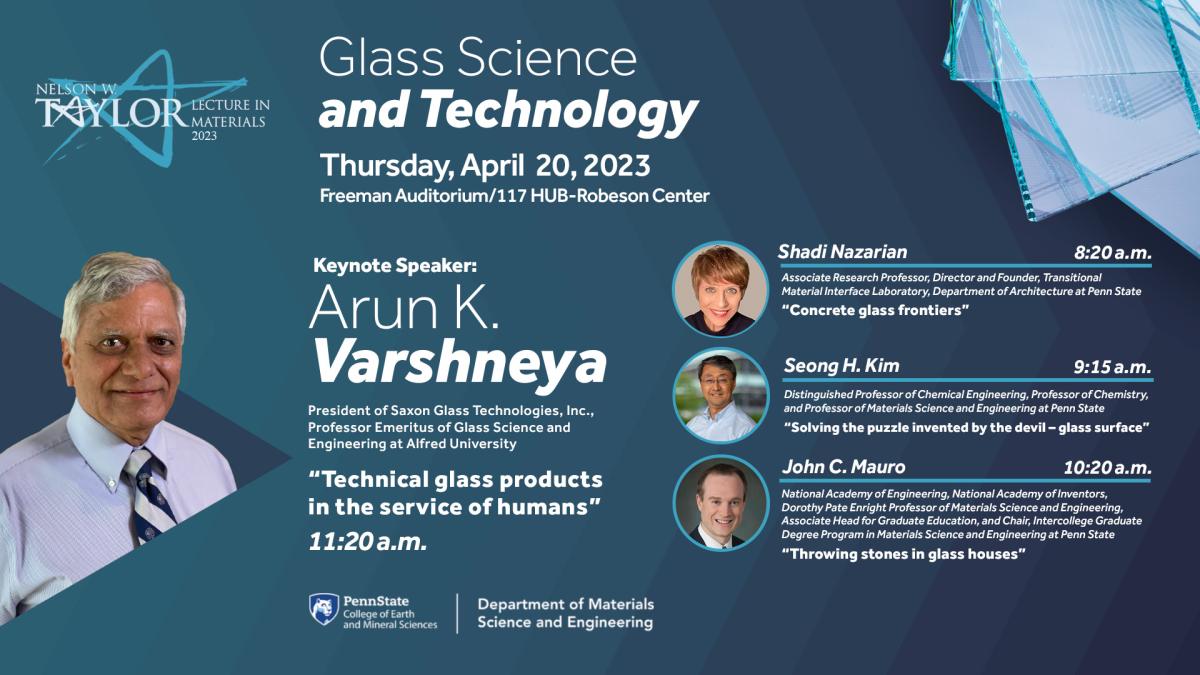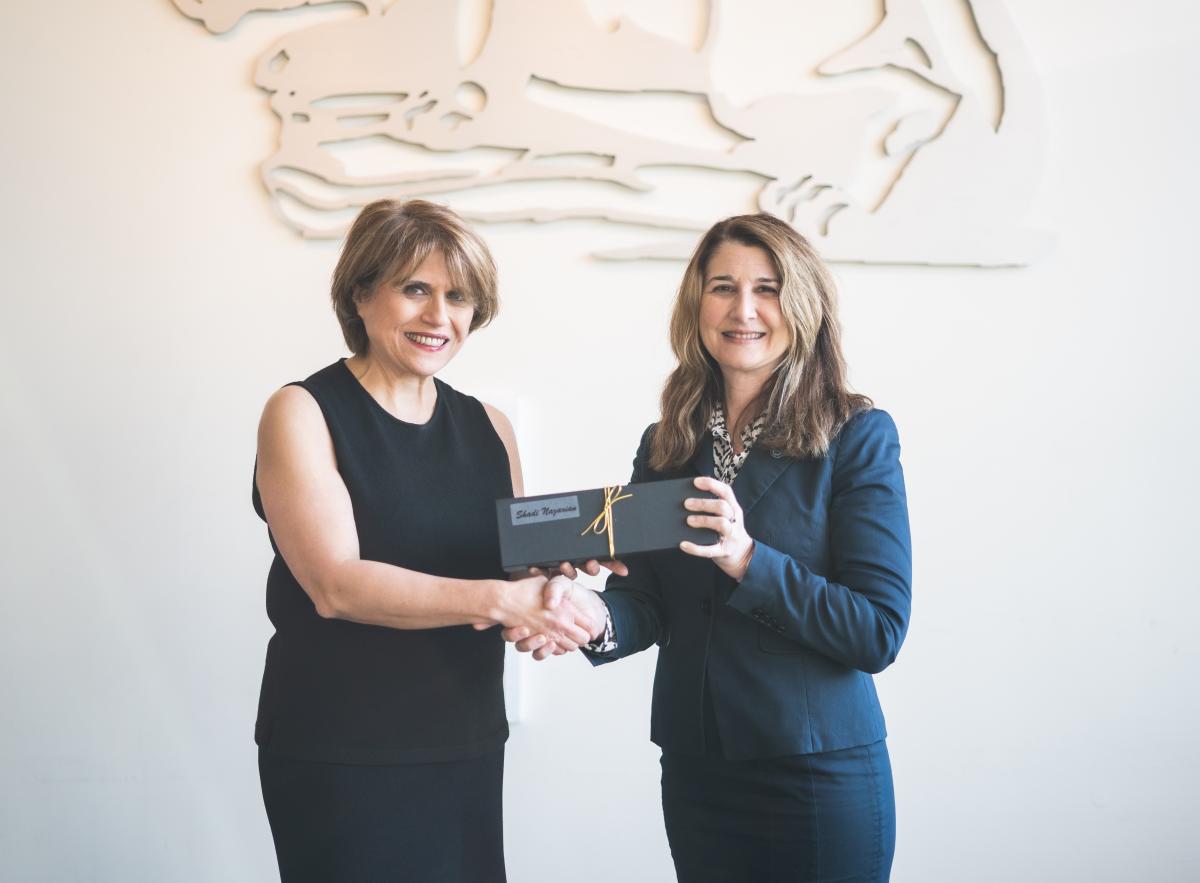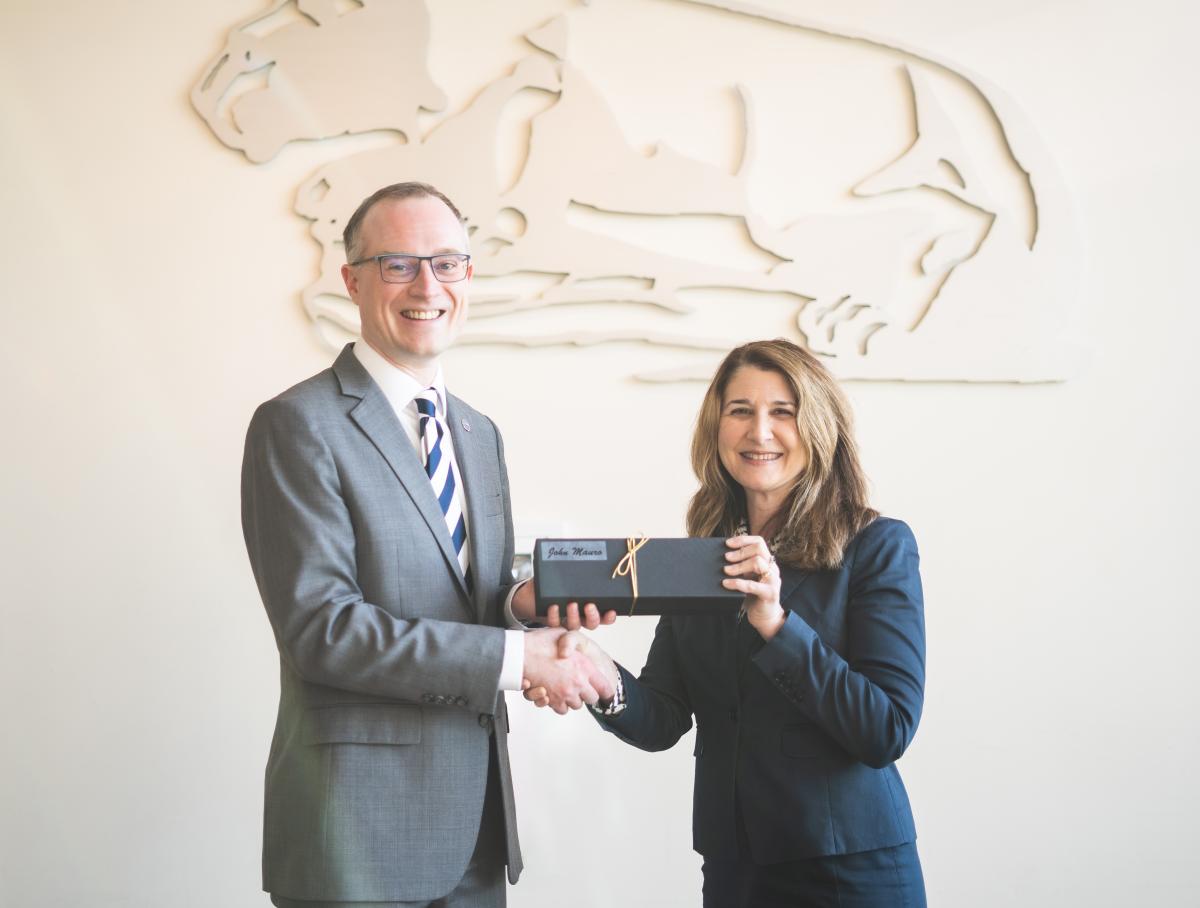John C. Mauro, Ph.D., is the Dorothy Pate Enright Professor of Materials Science and Engineering and the associate head for graduate education in the Department of Materials Science and Engineering at Penn State.
In 2001, Mauro earned his bachelor of science degree in glass engineering science in 2001 and his bachelor of arts degree in computer science, and in 2006, his Ph.D. in glass science—all from Alfred University.
Mauro joined Corning Incorporated in 1999 and served in multiple roles during his time there, including senior research manager of the glass research department, where he led a group of fifteen scientists and technicians in the development of new glass and glass-ceramic products. Mauro joined the faculty at Penn State in 2017, and he is a world-recognized expert in fundamental and applied glass science, statistical mechanics, computational and condensed matter physics, thermodynamics, and the topology of disordered networks.
Mauro is the inventor/co-inventor of several new glass compositions for Corning, including Corning Gorilla® Glass products. John is a pioneer in the use of physics-based and machine learning models for the design of new glassy materials. He is the inventor of new models for supercooled liquid and glass viscosity, glass structure and topology, relaxation behavior, and thermal and mechanical properties. He is co-author of Fundamentals of Inorganic Glasses, third edition (Elsevier, 2019), which is the definitive textbook on glass science and technology. Also, Mauro is the author of Materials Kinetics: Transport and Rate Phenomena (Elsevier, 2021), the most comprehensive textbook on kinetic phenomena in materials science.
In 2006, he was awarded the N.J. Kreidl Award from the American Ceramic Society, Glass and Optical Materials Division. In 2010, Penn State and the International Commission on Glass (ICG) awarded him the W.A. Weyl International Glass Science Award. In 2011, Mauro received the V. Gottardi Prize from the ICG, and in 2012 he was selected as the inaugural recipient of the Sir Alastair Pilkington Award from the Society of Glass Technology. In 2013, Mauro was awarded the S. Donald Stookey Award for Exploratory Research from Corning Incorporated. In 2015, he became a fellow of the American Ceramic Society and was recipient of the R.M. Fulrath Award. In the same year, he was also awarded the W.H. Zachariasen Award from the Journal of Non-Crystalline Solids. In 2016, the National Institute of Ceramic Engineers (NICE) selected Mauro as the winner of the Karl Schwartzwalder Professional Achievement in Ceramic Engineering (PACE) Award. He is also the winner of Corning’s Ethnically Diverse Group of Employees (EDGE) Excellence Award (2016) for promoting diversity at Corning. In 2019, Mauro was elected as a fellow of the Society of Glass Technology, and was the recipient of the Faculty of the Year Award in the Department of Materials Science and Engineering at Penn State. Most recently, he is the recipient of the Paul F. Robertson Award for Earth and Mineral Sciences Research Breakthrough of the Year (2020), the Faculty Scholar Medal from Penn State (2021), the Wilson Award for Excellence in Teaching (2022), the Fiat Lux Award from Alfred University (2022), and the Wulff Lectureship from MIT (2022).
Mauro is the author of over 340 peer-reviewed publications, and he has given over 200 presentations at international conferences and seminars. His publications have been cited over 16,000 times, with an h-index of 57. Mauro has 72 granted U.S. patents and several additional patents pending. He is editor-in-chief of the Journal of the American Ceramic Society. Mauro is a member of the National Academy of Engineering and the National Academy of Inventors.




 “Technical glass products in the service of humans”
“Technical glass products in the service of humans” “Concrete glass frontiers”
“Concrete glass frontiers”
 “Throwing stones in glass houses”
“Throwing stones in glass houses”